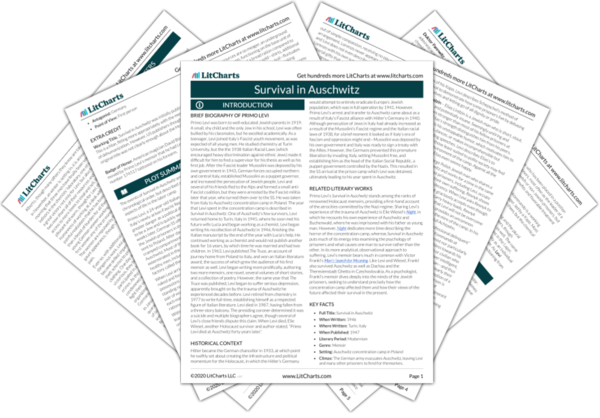Lager Quotes in Survival in Auschwitz
And do not think that shoes form a factor of secondary importance in the life of the Lager. Death begins with the shoes; for most of us, they show themselves to be instruments of torture, which after a few hours of marching cause painful sores which become fatally infected.
Precisely because the Lager was a great machine to reduce us to beasts, we must not become beasts; that even in this place once can survive, and therefore one must want to survive, to tell the story, to bear witness; and to survive we must force ourselves to save at least the skeleton, the scaffolding, the form of civilization.
We now invite the reader to contemplate the possible meaning in the Lager of the words “good” and “evil”, “just” and “unjust”; let everybody judge […] how much of our ordinary moral world could survive on this side of the barbed wire.
We would also like to consider that the Lager was preeminently a gigantic biological and social experiment.
Thousands of individuals, differing in age, condition, origin, language, culture and customs, are enclosed within barbed wire: they live a regular, controlled life which is identical to all and inadequate to all needs, and which is more rigorous than any experimenter could have set up to establish what is essential and what adventitious to the conduct of the human animal in the struggle for life.












